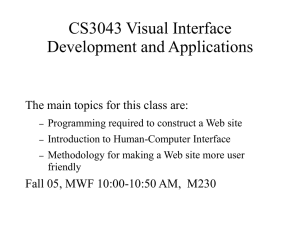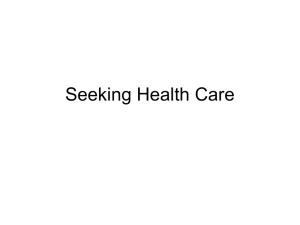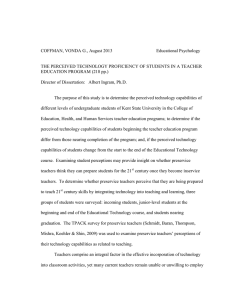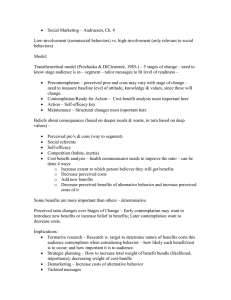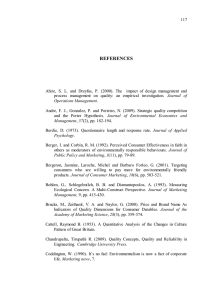A selection of papers accepted for publication
advertisement
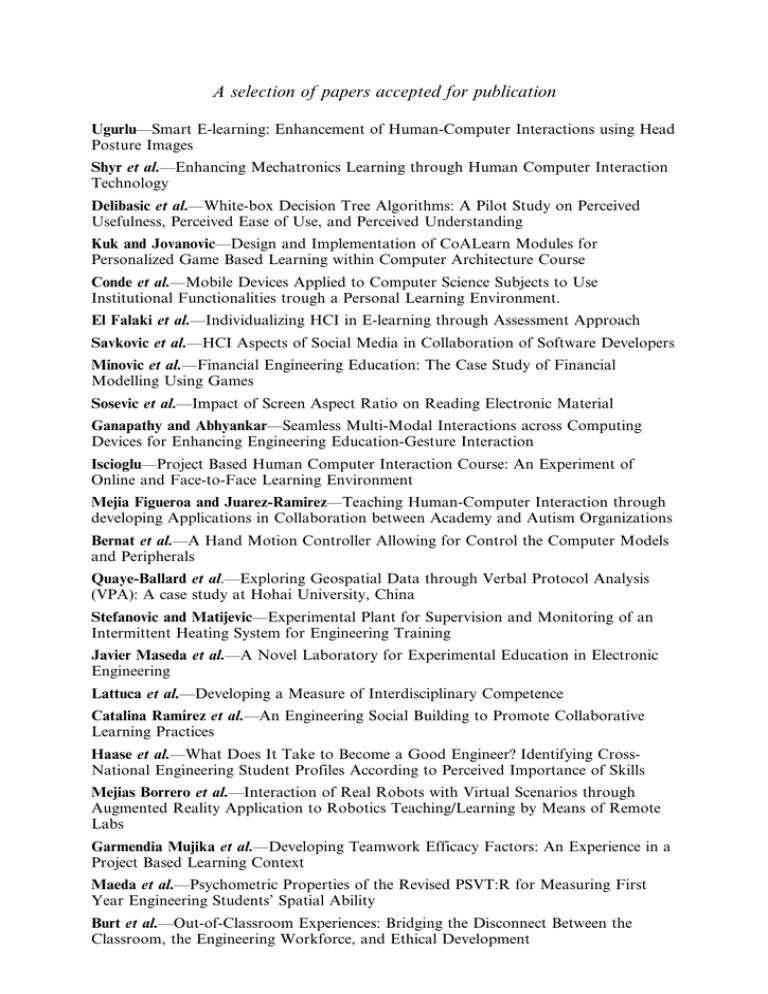
A selection of papers accepted for publication Ugurlu—Smart E-learning: Enhancement of Human-Computer Interactions using Head Posture Images Shyr et al.—Enhancing Mechatronics Learning through Human Computer Interaction Technology Delibasic et al.—White-box Decision Tree Algorithms: A Pilot Study on Perceived Usefulness, Perceived Ease of Use, and Perceived Understanding Kuk and Jovanovic—Design and Implementation of CoALearn Modules for Personalized Game Based Learning within Computer Architecture Course Conde et al.—Mobile Devices Applied to Computer Science Subjects to Use Institutional Functionalities trough a Personal Learning Environment. El Falaki et al.—Individualizing HCI in E-learning through Assessment Approach Savkovic et al.—HCI Aspects of Social Media in Collaboration of Software Developers Minovic et al.—Financial Engineering Education: The Case Study of Financial Modelling Using Games Sosevic et al.—Impact of Screen Aspect Ratio on Reading Electronic Material Ganapathy and Abhyankar—Seamless Multi-Modal Interactions across Computing Devices for Enhancing Engineering Education-Gesture Interaction Iscioglu—Project Based Human Computer Interaction Course: An Experiment of Online and Face-to-Face Learning Environment Mejia Figueroa and Juarez-Ramirez—Teaching Human-Computer Interaction through developing Applications in Collaboration between Academy and Autism Organizations Bernat et al.—A Hand Motion Controller Allowing for Control the Computer Models and Peripherals Quaye-Ballard et al.—Exploring Geospatial Data through Verbal Protocol Analysis (VPA): A case study at Hohai University, China Stefanovic and Matijevic—Experimental Plant for Supervision and Monitoring of an Intermittent Heating System for Engineering Training Javier Maseda et al.—A Novel Laboratory for Experimental Education in Electronic Engineering Lattuca et al.—Developing a Measure of Interdisciplinary Competence Catalina Ramı́rez et al.—An Engineering Social Building to Promote Collaborative Learning Practices Haase et al.—What Does It Take to Become a Good Engineer? Identifying CrossNational Engineering Student Profiles According to Perceived Importance of Skills Mejias Borrero et al.—Interaction of Real Robots with Virtual Scenarios through Augmented Reality Application to Robotics Teaching/Learning by Means of Remote Labs Garmendia Mujika et al.—Developing Teamwork Efficacy Factors: An Experience in a Project Based Learning Context Maeda et al.—Psychometric Properties of the Revised PSVT:R for Measuring First Year Engineering Students’ Spatial Ability Burt et al.—Out-of-Classroom Experiences: Bridging the Disconnect Between the Classroom, the Engineering Workforce, and Ethical Development
